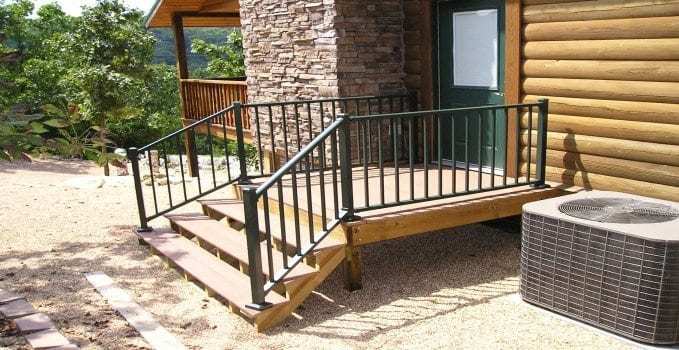MMC Blog
How to Replace an Old Railing
Are you ready to replace a worn-out railing? Whether it’s an eyesore, a constant source of anxiety, or a true safety hazard, you won’t regret upgrading it. After all, learning how to replace an old railing and putting that newfound knowledge to work can instantly improve the look and function of your space. You’ll increase your property’s curb appeal, safety, and maybe even its value. But perhaps you’re not sure how to get started. Scroll down to explore factors that indicate it’s time to replace your railing, the replacement process, and some handy tips.
When to Replace Your Railing
First, are you sure it’s time to replace your current railing? Look for the following common indicators that it’s time to replace your railing:
- Wobbling or looseness
- Visible rot or rust
- Cracked, split, or warped sections
- Building code issues
Of course, you don’t need to wait for safety hazards to learn how to replace an old railing. Outdated style and time-consuming maintenance requirements are also perfectly valid reasons to move forward with a replacement.
The Replacement Process
What will happen during the replacement process? Generally, it will look a little something like this:
- Remove the old railing. Typically, this will involve using some basic tools — such as a drill, pry bar, and/or saw — to carefully detach the railing sections, starting with the balusters, moving on to the handrail, and finishing with the posts. Take care not to harm the surrounding surfaces, like decking, stairs, and walls.
- Repair and prep the area. Clean and inspect the surface where the new railing will be installed. Patch any holes, sand rough spots, and check that the base is solid enough to support new posts.
- Measure and plan. Precisely measure the height, spacing, and length needed for your new railing. Most building codes require certain railing heights and maximum spacing between balusters, so double-check your local code requirements.
- Purchase and install your new railing. At MMC Fencing & Railing, we offer a variety of high-quality railings in convenient kits. Follow the instructions to firmly install the new posts, add the rails and balusters, and ensure that all the hardware is tight and secure.
- Conduct a final inspection. Step back and check the railing from all angles. Then, step forward to test the rail’s sturdiness, and measure the height and spacing to ensure they meet safety standards.
Handy Tips to Keep in Mind
If you’re not especially familiar with the installation of railings, review the following tips to ensure the transition goes smoothly:
- Check local building codes first. Before you buy any materials or start marking the height or planning the baluster spacing, review any applicable building codes to save yourself from making a costly, time-consuming mistake.
- Take thorough measurements. You’ll never regret double-checking (or triple-checking) the measurements for the railing height, post spacing, stair angles, and more. Take your time, and make notes.
- Use high-quality materials. A railing is only as sturdy as the materials used to compose it. Make sure you choose low-maintenance materials, like aluminum, and corrosion-resistant hardware. Speaking of which . . .
- Consider choosing a prefabricated railing kit. This will simplify the shopping and installation processes and ensure that you get a professional-looking result without breaking the bank.
- Level as you go. Small misalignments add up fast, so be sure to check that each post is level and plumb as you add it.
Are you ready to replace your worn-out railing with a shiny, top-quality, new railing? MMC Fencing & Railing is here for you. Our online shop sells aluminum and vinyl railing in various styles and colors. No matter what you’re looking for or how large your budget is, you’re sure to find something beautiful. Give us a call at 866-931-5002 or contact us online to get started. We look forward to hearing from you!

